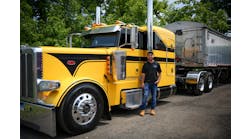TeraWatt developing I-10 corridor for heavy-duty electric vehicles
As electrification continues to rise in the U.S., with the National Renewable Energy Laboratory estimating 80% growth in the sector from 2018-2050, TeraWatt Infrastructure recently unveiled their intention to join the ranks of those creating electric charging corridors along the west coast.
“Long-haul trucking electrification represents a significant opportunity to reduce transportation sector emissions, but hinges on the rapid scale up of specialized charging infrastructure,” said Neha Palmer, TeraWatt CEO.
While Volvo Trucks is also creating an electric charging corridor, TeraWatt will be the first to establish a network of high-power charging centers, expanding their current locations along Interstate 10 (I-10). These centers will be specifically built to serve medium- and heavy-duty vehicles across California, Arizona, and New Mexico. By doing so, TeraWatt is helping to address some of the key integration factors of electric vehicles such as energy requirements, EV charging infrastructure requirements, and grid integration requirements, as well as assisting fleets in incorporating their expectations for when, where, and how long their EV’s will dwell.
Each of TeraWatt’s centers will also feature several factors especially for meeting the needs of medium- and heavy-duty electric fleets, including direct current fast chargers, pull-through charging stalls, on-site amenities for drivers, and reliable hours for easy charging access. To supplement their facilities, each center will also include resiliency generation and zero-carbon electricity options to adapt to the changing climate, including the usage of battery-backed renewable energy and megawatt charging stations.
Exact locations for the stations have not yet been announced, but due to their intended purpose of supporting both long-haul and local electric trucking, each station will be located less than one mile from the nearest highway exit. Each station will also be roughly 150 miles apart and be between 4-100 acres in size, all in conjunction with both local and state government and utilities, as well as third-party grants to incentivize station use.
No completion date for the project has yet been announced, but the establishment of a heavy-duty charging corridor would be an important milestone decarbonizing the commercial vehicle industry.
“The evidence says that across the on-road transportation sector—even in Class 8, the heaviest long-haul trucks—electricity has the best combination of cost-effectiveness and a pathway to get to zero,” said scientist Colin Murphy, deputy director of the UC Davis Policy Institute.




